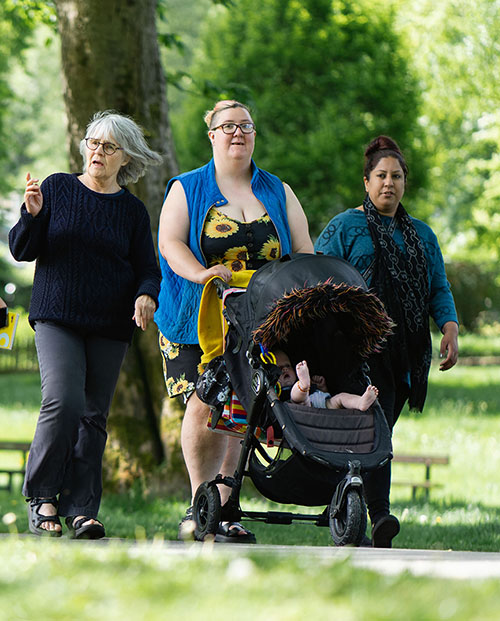The difference we want to make
We want everyone in Calderdale to have hope, ambition and access to opportunities, regardless of their starting point, and to live their fullest life.
Driven by the borough’s kindness and inclusion, we will continue to support the most vulnerable people in our communities and those who experience the most disadvantage and discrimination.
We want everyone to be healthy enough to live a larger life.
The ambitions within this priority are:
- Starting well and developing well – children are ready for school and every 15-year-old has hope and aspiration.
- Living and working well – working-aged people have good emotional health and wellbeing and fewer suicides.
- Ageing well – older people have strong social networks and live in vibrant communities.
- Minimising the impact of poverty - residents have reduced financial pressures and increased life chances.
Context

There are underlying inequalities in our borough, and the COVID-19 pandemic and recent economic challenges have increased these. Healthy life expectancy (the average number of years a person would expect to live in good health) is shorter in our most deprived wards than those in more advantaged areas, and levels of homelessness in Calderdale continue to be high.
In 2024, more people are experiencing poverty and hardship, and reduced opportunity and wellbeing, than ever before. Through the Anti- Poverty Partnership, we are proud of the strong connections between the Council and community organisations to deliver excellent support services. We do all we can to stop people falling into poverty, reducing the impact if they are in poverty and helping them move out of poverty.
How we will make a difference
Starting and developing well
- Join up support for families by delivering a sustainable Family Hubs programme, with a focus on narrowing the gap.
Ensure children with additional requirements can meet their educational needs locally, and support them to become successful and independent adults. - Ensure more children are thriving in mainstream education and reduce exclusions.
- Increase availability of high-quality, local accommodation for children looked after and care leavers.
Living and working well
- Develop pathways into apprenticeships, training, skills, and employment. Improve skills and qualifications, enhance connections to work and career, and support more people to access good work.
- Build on our Making Every Adult Matter programme to improve outcomes for adults experiencing multiple and complex disadvantage.
- Narrow the gap in physical activity by developing the Active Calderdale programme to include Active Health and Care, Active Travel and Active Communities.
- Develop and deliver a Mental Health Alliance to improve how organisations work together to ensure better outcomes for residents.
Ageing well
- Deliver a programme of community-led support for adults of all ages, focusing on existing strengths, assets, and connections with communities.
- Deliver the Ageing Well Alliance Plan.
- Implement and embed the new Voluntary, Community and Social Enterprise Strategy, ensuring the Council plays its part in a thriving sector.
Minimise the impact of poverty
- Deliver the Anti-Poverty Action Plan.
- Finalise and implement our Building Stronger Communities Strategic Framework.
How we will measure success
| Performance Indicator | What is good performance? |
|---|---|
| Prevalence of Healthy Weight children (reception & Year 6) | High |
| Percentage achieving a good level of development in the Foundation Stage Profile | High |
| Average Progress 8 score per pupil | High |
| Healthy life expectancy at birth (males and females) | High |
| Further education and skills achievements per 100,000 population aged 19 to 64 | High |
| Proportion of adults with a Level 3 qualification or higher | High |
| Percentage of physically active adults | High |
| Proportion of older people in receipt of long term adult social care (65+) | Low |
| Requests resulting in a service (Adult Social Care) | Low |
| People in adult social care quality of life - Range (-0.8 to 1.0) | High |
| Outcome Short term service provision (Adult Social Care) | High |
| Voluntary organisations as a rate of population (per 100,000) | No Polarity |
